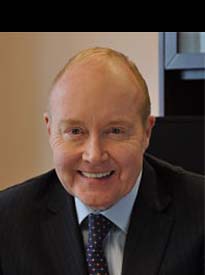
After the CRM2 project was completed in 2017, the Mutual Fund Dealers Association of Canada (MFDA) published a consultation paper on expanding cost reporting for investors. The MFDA proposed a second initiative to provide greater transparency of the embedded costs and fees charged by mutual funds, investment funds and ETFs, in addition to the improved transparency of advisor compensation and portfolio performance under the existing CRM2 rules.
The Canadian Securities Administrators are expected to release a new, expanded cost-reporting proposal by making amendments to a National Instrument. Dubbed by many in the industry as CRM3, the proposal will deliver investors a comprehensive picture of their total costs in the investing process to compare against their investment results.
The proposal will be more difficult and costlier than the earlier CRM2 model. For CRM2, the advisor compensation and portfolio performance information are limited and roughly similar in format across the industry. Importantly, the data is sourced directly from internal sources at the dealer registrant and then provided to the client.
In contrast, the information required for expanded cost reporting will be drawn from the extensive network of portfolio holdings of mutual funds, ETFs, managed investment funds distributed to third-party platforms, labour-sponsored venture funds and commodity pools across the marketplace.
There are more than 3,400 mutual funds in Canada with different fees changeable over time, and at the end of last year, there were 850 ETFs. For greater transparency, fees may be disaggregated into data related to specific functions, such as portfolio management fees, fund operation expenses and custodial fees paid to either investment managers or other third parties. Moreover, disclosure standards for fees charged on similar investment funds, such as mutual funds and segregated funds, are not consistent, since they are distributed by securities and insurance registrants, respectively. Harmonizing these disclosures will require rule changes.
The success of the so-called CRM3 proposal will require significant planning and coordination, involving sell-side investment and mutual fund dealers, buy-side institutions and IC/PM registrants, industry service vendors implementing the needed technology and systems, and the securities regulators overseeing rulemaking and compliance.
Clear and reasonable timelines for the implementation of the defined steps of the project will have to be marked out and agreed to by the participants. The starting point will be to identify the cost information that is essential for investors, and then determine a standardized cost calculation methodology and reporting that is easily understood by investors. Regulators will need key rule harmonization — i.e., the same disclosure requirements for similar investments offered by different registrants — to produce comparable fee/cost information before the implementation of the required technology and systems.
The CRM2 project illustrated the importance of close coordination between rulemaking and the design of technology and systems to ensure efficient and smooth implementation. This will have to happen with expanded cost reporting as well.
With the CRM3 exercise, it is important that the regulators undertake a measured cost-benefit analysis to determine the extent of the information provided to investors while also considering the technology and administrative costs imposed on dealers. That analysis should also consider the impact of the proposal on small dealers, and small mutual funds and managed funds with narrower operating margins.
A well-managed implementation of the proposed CRM3 will contribute more transparency and increased efficiencies in the investment process, benefiting retail investors in more complex and innovative wealth markets.
